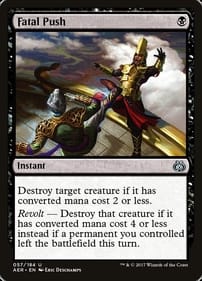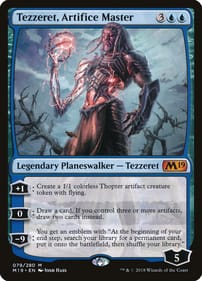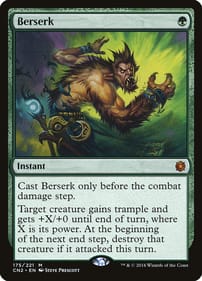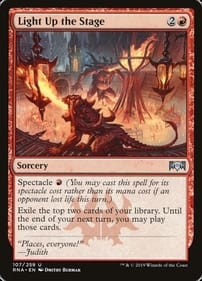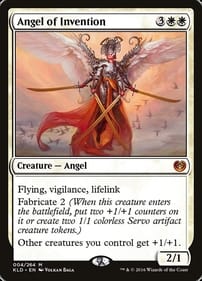Too Many Marvel Shows, True, but Comics Subsidiary Looks Good On Disney’s Balance Sheet
By Dan Brown Bob Iger spoke for many of us last week when he said, in essence, there’s too damn much Marvel content. The question is: How is this pronouncement by the Disney boss – and his plan to scale back spending by the corporation— going to affect the comics arm of the company? During an interview with CNBC, Iger, Disney’s CEO, said the sheer volume of Marvel streaming series and movies has reached the point where the audience has been “diluted,” meaning that Marvel fans haven’t been as excited about recent big-screen releases like this February’s Quantumania as they were back in the days of Endgame four years ago. And no wonder. The third instalment in the Ant-Man series is, for those keeping score at home, the 30th film set in the Marvel Cinematic Universe following 2008’s Iron Man. I mean, I love Paul Rudd as much as the next straight guy, but at some point even I have had my fill of his brand of non-threatening charm. Deciphering Iger’s ire, he appeared to be putting the blame on the avalanche of shows that were released by his Disney+ streaming service during the pandemic. And he’s got a point. I don’t know about you, but there are no longer a lot of people in my life who get excited whenever a new superhero show materializes on the small screen. No sooner had I finished watching 2021’s WandaVision than we were drowning in Marvel characters: the Falcon and the Winter Soldier, Loki, Hawkeye, Moon Knight, Ms. Marvel, She-Hulk, and they keep coming. They are making shows about characters I don’t even care about, which is saying something – I was raised on Marvel heroes in the 1970s and 1980s! Ah, the comics. I’m sure Marvel’s comics division won’t be spared from the billions of dollars in cuts that Iger signaled are in the offing, but there’s a simple fact of balance sheets that should shield it from excess financial pain. Simply stated, a comics company that is a subsidiary of a multibillion-dollar enterprise is going to appear on the financial statement as a cost-effective proposition because, compared with the investment required to make a movie, the cost of making a comic book or graphic novel is almost nothing – and the payoff is off the charts. As I’ve written elsewhere, my theory is that the purpose of Marvel’s comics is to serve as a kind of test kitchen where ideas can be thrown at the wall to see what sticks. Whether it’s Tony Stark donning a suit of armour for the first time, or a set of cosmic jewels that gives their possessor infinite power over reality, or a civil war pitting superhero allies against one another – those things all happened first in the pages of the comics. Groot. Thanos. Peter Parker. There are decades of stories about these characters to be mined by the writers of Marvel movies and shows. (There are so many comic and other adaptations coming out of Hollywood, it’s enough to make you wonder, in these days of a strike by movie writers, just exactly what Tinseltown scribes do, apart from plundering existing properties.) Another way of saying it is, Guardians of the Galaxy director James Gunn didn’t have to invent the Infinity Stones because artist/writer Jim Starlin did the hard part for him five decades ago. Perhaps I’m deluding myself, but I feel as though the cheapest talent working for Disney – those artists and writers who come up with the concepts that percolate upward into movies and TV shows – are going to be just fine. Or think about it this way: Freelance comic creator Jack Kirby, who arguably invented more characters and concepts than any other figure in comics history, in all the decades he toiled for Marvel (and DC), never had health insurance. Even years after Kirby’s death, I’d say Disney is getting its money’s worth out of him. Dan Brown has covered pop culture for 30 years as a journalist and also moderates L.A. Mood’s monthly graphic-novel group.
Why Didn’t Comics Version of Indiana Jones Set The World On Fire?
By Dan Brown All readers want from comics, I’ve said before, is compelling characters in interesting situations. Well, Indiana Jones – featured in the Dial of Destiny, which is in theatres now – is certainly a compelling character as played by Harrison Ford. And the makers of the Indy films have certainly been able to place him in some interesting (and deadly) situations. So how come the daring archeologist has never been able to sustain a comic title for long? I’m not saying Jones is a total washout as the headliner of a monthly series, but compared to adjacent properties, like Star Wars, he’s only been a blip in the grand sweep of comics history. Inspired by the success of 1981’s Raiders of the Lost Ark, It’s true Marvel Comics did publish more than 30 issues of The Further Adventures of Indiana Jones starting in 1983. Remember, those were the days when there wasn’t a property Marvel didn’t try to plunder. The gang from the bullpen attempted to cash in on every new fad, trend, craze and sensation that came along. How ridiculous did it get? This was the era when even the rock band KISS ended up in the pages of Marvel Comics. That’s right – for a brief moment, Gene Simmons was a Marvel protagonist, along with Spider-Man, the Hulk, Wolverine and the rest. I’m guessing an Indy comic seemed like a no-brainer. As it turned out, that first series would pale beside the Star Wars monthly, which ran 107 issues from 1977 to 1986 and is credited by some with keeping the House of Ideas afloat during lean economic times. And those Star Wars comics were . . . fine. They weren’t the worst stories in the world, although I would argue Russ Manning was doing far more interesting things in the same universe in the pages of daily newspapers with the Star Wars comic strip. And Marvel certainly invested in the venture, attaching talents like Howard Chaykin, Walt Simonson and John Byrne to bring Jones to life on the page. Yet the Further Adventures of Indiana Jones fizzled even before the original Indy trilogy wrapped up in 1989 with the Last Crusade. Here’s another comparison: Conan, Robert E. Howard’s pulp barbarian character, was also a Marvel Comics property during roughly the same period, and has been in the hands of one publishing house or another for decades since. Who knows how many Conan comic adaptations there have been to date? It’s also true Dark Horse Comics licenced Indiana Jones and his bullwhip in the 1990s for several more adventures. But those stories are only half-remembered now, if at all. So despite his enduring appeal on the big screen, why was Indy a comparative dud in comics form? I don’t have an all-encompassing answer, but the fact is some properties just don’t translate to other media. Some books don’t make good TV shows. Some movies don’t make good comics. Very few plays make for interesting films. (This is where I should also note that the Young Indiana Jones Chronicles, the network version of the character, barely lasted two seasons on ABC, so there may be something about the archeologist that just doesn’t work in other media.) Or perhaps it’s because the Indy films are the end product of pop culture, not the beginning. What I mean is, it was newspaper strips and adventure comics, along with silver-screen serials, that moved George Lucas and Steve Spielberg to come up with Indy in the first place. And maybe it just ends there: Dr. Jones was intended to be a creature of the big screen, so he is doomed never to transcend its limits. Dan Brown has covered pop culture for 30 years as a journalist and also moderates L.A. Mood’s monthly graphic-novel group.
Full-length Murgatroyd & Nepenthe Graphic Novel is Perfect Summer Reading
By Dan BrownSummer is here and so is D.S. Barrick’s full-length Murgatroyd & Nepenthe graphic novel.Now is the perfect time to savour this dreamlike tale of two outsiders travelling through a series of psychedelic landscapes, musing about the nature of life as they go. As I’ve said elsewhere, this book is utterly original – I’ve never read anything else like it, which is a good thing.It’s hard for me to describe the pair’s first book-length adventure. It is poetic, wistful, fun, and challenging in all the right ways. If you don’t know the name D.S. Barrick, odds are you’ve already seen his work. He is the Forest City cartoonist who created the lively mural on the exterior of L.A. Mood’s new location at 100 Kellogg Lane. His characters likewise grace the store’s bags and T-shirts.He is also the illustrator writer behind the venerated local character Skulsi Thatcher and has collaborated with writer Scott MacDougall on the Lucky Unlucky series. Barrick is on record as saying what he wanted to do with Murgatroyd & Nepenthe, first published as four separate comics, was to create a story that has no beginning or end – he wanted it to be “all middle.” What this means in practical terms is the focus rests on the two central characters and how they interact. It also makes it impossible for me to “spoil” the story.At the same time, you’ll have a hard time ignoring the different locales the oddball pair move through.There are pyramids, ships that travel on air as easily as water, Christmas trees, rugged cavescapes, and sparkling vistas of stars with flying saucers that put me in the mind of how Jack Kirby pushed the comic form in new directions back in the day.Another way of saying it: This is the most colourful black-and-white book I’ve come across.There are also girl vampires, street urchins and robots (a D.S. Barrick specialty). As part of the bonus materials, the London artist has even included renderings of his characters done by his young daughter in the back of the new volume.The reason I think this is the best time to read Murgatoryd & Nepenthe is because in the lazy summer, the overtaxed brain needs a break from the usual routine.So if you want a thought-provoking and moving diversion from the stuff being done by the big publishers, check out D.S. Barrick’s latest. It will blow your mind, but in a good way.How Barrick will top himself, I don’t know, but I hear through the grapevine the next projected book in the series has an intriguing premise: Murgatroyd & Nepenthe in space!Dan Brown has covered pop culture for 30 years as a journalist and also moderates L.A. Mood’s monthly graphic-novel group.
Upcoming Omnibus Volumes Feature Comics from Marvel’s Michael Golden Age
By Dan Brown There’s a whole lotta classic Michael Golden art coming down the pipeline. I invite young comic fans who missed out on Golden’s most-celebrated work in the 1980s to check out two omnibus editions set to debut early next year. They feature reprinted issues from two series that kicked off in 1979 – ROM: Spaceknight and The Micronauts – then ran into the mid-1980s. If you want to understand why fiftysomething dudes like me always seem to be bellyaching about how comics reached perfection when we were kids, these books are Exhibit A. In my memory, Golden’s pencils leapt off the page with undeniable power and expressiveness. He could take obscure Marvel comic characters and make them memorable. He could make alien landscapes seem truly otherworldly, as few pencillers – think George Perez and Jack Kirby – did. Golden was never the interior artist on ROM, but he did contribute a series of amazing front covers in the title’s early going. A toy tie-in with Hasbro, ROM followed the exploits of a galactic do-gooder who comes to Earth to dispatch the evil Dire Wraiths. Having those shape-shifters as foes imbued the series with a vibe straight out of Invasion of the Body Snatchers. Of course, the ironic part is how another race of Marvel shape-shifters, the Skrulls, had already been trying to take over the planet, so the Wraiths were kind of redundant. I especially love the cover of issue 11, which shows the silver spaceknight ripping the wing from an F-16 in mid-air as a squad of the planes swarms him. Golden’s art had started to make an impression on me earlier in 1979 with the Micronauts. I was 11 years old. He illustrated the first 12 issues of that title, also designed to push the toy line of the same name, and I now view his pencils on the book as one of the great runs in comic history, in the same category as Perez’s time on New Teen Titans and John Byrne’s pencils for the Uncanny X-Men. The cover of each issue blared “They came from inner space” and the action took place on a sub-microscopic scale; what in our world are tiny molecules, were planet-sized in the Microverse. It’s true the premise wasn’t bursting with originality: A band of plucky rebels, including two robots, fights to free a galaxy in the iron grip of a villain clad in black armour. But Golden’s art elevated the material. Especially moving was issue 10, in which the warrior Acroyear race – as well as the conscious homeworld they inhabit, Spartak – repulses an army of Baron Karza’s dog soldiers. If the Microverse sounds familiar, it’s because it plays a huge role in the Marvel Cinematic Universe, where it’s known as the Quantum Realm. The biggest mystery to me was why, with the rare exception of standalones like Avengers Annual No. 10 in 1981, Golden wasn’t allowed by Marvel to play with the company’s marquee characters. I guess not every comic creator is destined to go down in history as being as prolific as Kirby. ROM: The Original Marvel Years Omnibus Volume 1 includes the first 29 issues of ROM: Spaceknight, as well as Power Man and Iron Fist No. 73, in which he guest-starred. Micronauts: The Original Marvel Years Omnibus Volume 1 collects the first 29 issues of the series, plus the first two annuals. Both go on sale in January. Dan Brown has covered pop culture for 30 years as a journalist and also moderates L.A. Mood’s monthly graphic-novel group.
Watcher not satisfied with just watching: Omniscient alien serves as role model to journalist-in-the-making
By Dan Brown There is a Marvel character who inspired me to become a journalist – and it’s not Peter Parker. Nor is it Robbie Robertson or Ben Urich or anyone else who worked at the Daily Bugle, not even J. Jonah Jameson. It’s the Watcher. Where else would a boy growing up in small-town Ontario in the 1970s get the idea that being a professional observer could be a noble pursuit, except from a reticent, toweringly tall, omnipresent, bald alien? I certainly didn’t get it from my parents, neither of whom were journalists. I delivered the London Free Press to doorsteps and mailboxes in Poplar Hill every morning, so being familiar with the newspaper business from an early age likely played a part. But looking back, it’s apparent to me the Watcher was my journalistic role model long before I was even thinking of choosing a career path. I forget where I first encountered Uatu, as he is known among his people. It may have been in the pages of The Fantastic Four. I do recall how he caught my attention for real when Marvel’s What If? title debuted in 1977. The Watcher’s mission is to observe events and be present to witness crucial moments as the universe unfolds. He materializes on Earth when things of historic import are in the offing. It was Reed Richards, the leader of the Fantastic Four, who figured out if the Watcher had made himself known to mere humans, something heavy was about to go down. There is something pure to the Watcher’s stated purpose. “My sworn task is to observe and chronicle great events within this sector of the universe. My curse is to always witness and never participate,” he explained in one comic. “Is it not my sworn duty to stand passively by, observing the births and lives and deaths of men – and universes? Am I not fated forever to know the future in its infinite variations – yet bound by a sacred oath never to interfere?” the omniscient one asked in another. I can see how those kinds of idealistic sentiments would have made a big impression on my younger self. Decades later I ended up being a reporter, and that’s what a reporter is supposed to do: Bear witness. Oh, and about that oath never to meddle in the affairs of Earthlings . . . yeah, he didn’t keep his promise. The Watcher was constantly swearing not to interfere, and then, like clockwork, breaking his vow. Kind of like how the crew of the Enterprise was always violating the Prime Directive. Stationed on Earth’s moon, over the eons of rubbernecking the Watcher became enamoured of humankind. His tragedy is that he developed a soft spot for those whose history he was supposed to monitor without altering, which he could easily do, since he is pretty much omnipotent. I notice on some fan sites there are estimates of how many times the Watcher changed the course of events in the Marvel Universe that run into the hundreds. So can a journalist in our world succeed where the Watcher failed? No. For starters, there’s the scientific dictum that states even the act of observing something necessarily changes it. And if objectivity was possible, then we could simply program robots to do the job of journalism for us. But experience has taught me how human reporters can be, if not objective, then fair, which is what I strive to achieve in my own work as a watcher. Dan Brown has covered pop culture for 30 years as a journalist and also moderates L.A. Mood’s monthly graphic-novel group.
Laufman makes jump to grownup themes in Crimson Fall: Lambs of God
By Dan BrownWith Crimson Fall, London graphic novelist Derek Laufman has effortlessly made the shift from all-ages comics to more mature sequential art. That said, I’ve read the books Laufman has written/drawn for younger readers, and I never felt like I was being talked down to. And I’m old.Longtime Laufman fans need not fret about Crimson Fall. It has all the fun and adventure of Bot 9, RuinWorld and Witch of Wickerson; in the Forest City creator’s words, Crimson Fall is “Hellboy meets the Witcher with a splash of Game of Thrones in there.” In other words, the 24-page offering is a dungeon adventure with swear words and one very meaty adult theme that could be lost on younger readers: the complexity of faith.Byron’s Laufman debuted the black-and-white book in April at the Toronto Comics Art Festival, a gathering of creators whose specialty is producing indie comics, which is exactly Laufman’s jam, even though he has done work for DC and Marvel – the Coke and Pepsi of the comics industry – drawing characters like Batman, Spider-Man and Luke Skywalker.Subtitled Lambs of God, it’s part of a projected series set in the same milieu, and takes readers into a shadow-filled monastery that has been pillaged by forces unknown. Father McKellen is seeking answers about how his fellow holy men died, retaining the broadsword-wielding knight Sir Duncross to handle any, er, supernatural entanglements.You can enjoy the story as a straightforward, kickass adventure tale about a pair of demon slayers doing what they do best. But if you go beneath that surface battle, paying attention to the interplay between the two men, you’ll notice a difference in their beliefs.It is Father McKellen, the man of the cloth, who – when confronted with irrefutable evidence that creatures from hell exist – asks a rational question: “How is it possible that demons walk in our world?”Sir Duncross, in between hacks of his wide blade that echo with sound effects like “Slash,” “Slice” and “Stab,” outlines his belief in an older order: He puts his faith in gods, not God. He is not impressed with monotheism. “Does your church not still seek the truth?” the fighter quizzes the cleric, revealing the disgust he feels for religious leaders who won’t be straight with their followers about the nature of evil.The foray into the monastery comes to a fiery conclusion, and in the end, each of the men makes a small symbolic move in the direction of the other.As I have with Laufman’s previous creations, I give Crimson Fall: Lambs of God an enthusiastic thumbs up. This is a fun adventure, stylishly rendered, that left me with much food for thought.Dan Brown has covered pop culture for 30 years as a journalist and also moderates L.A. Mood’s monthly graphic-novel group.








